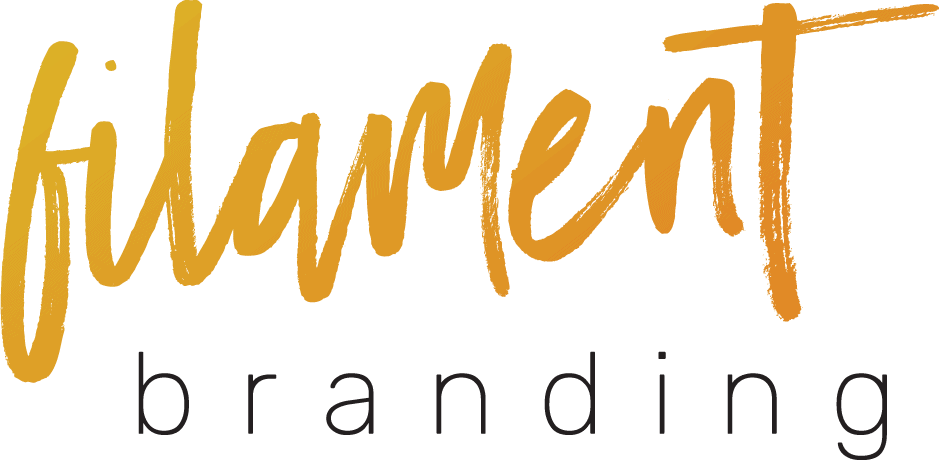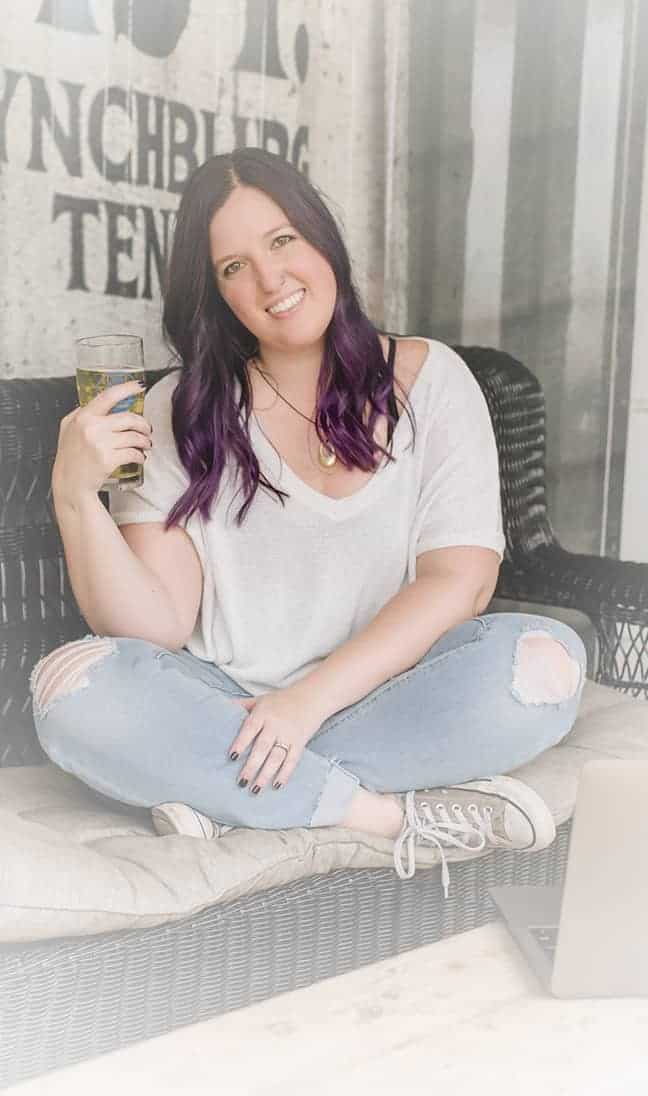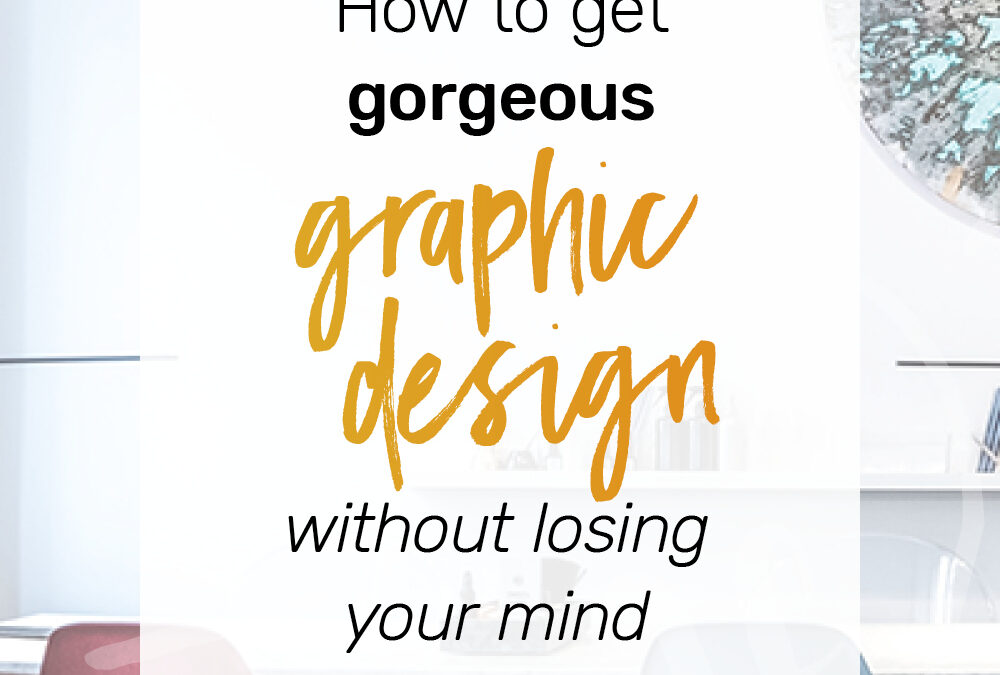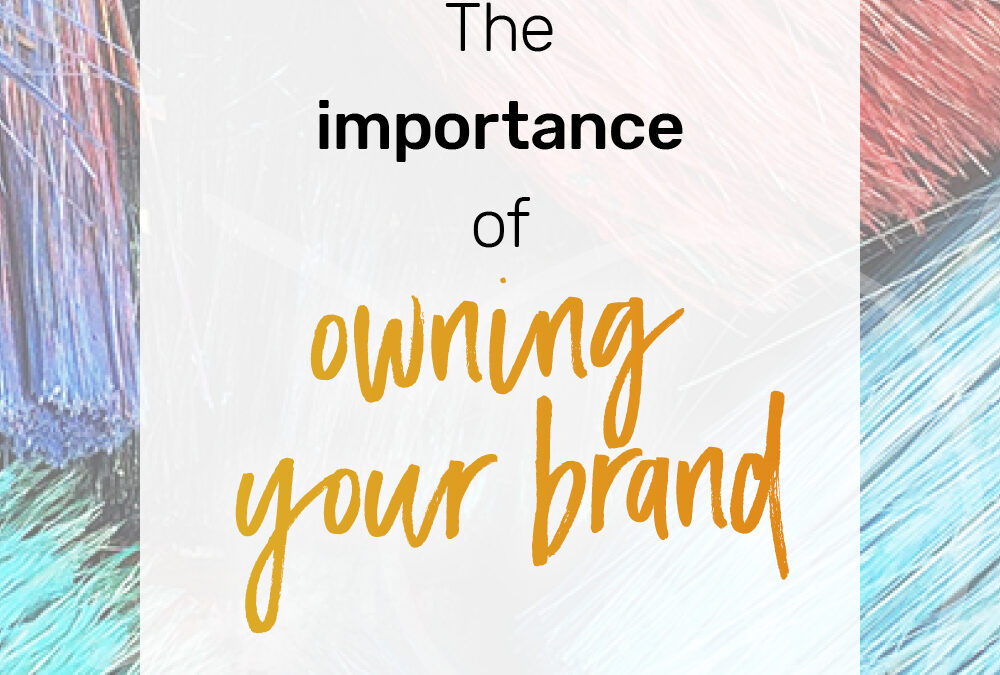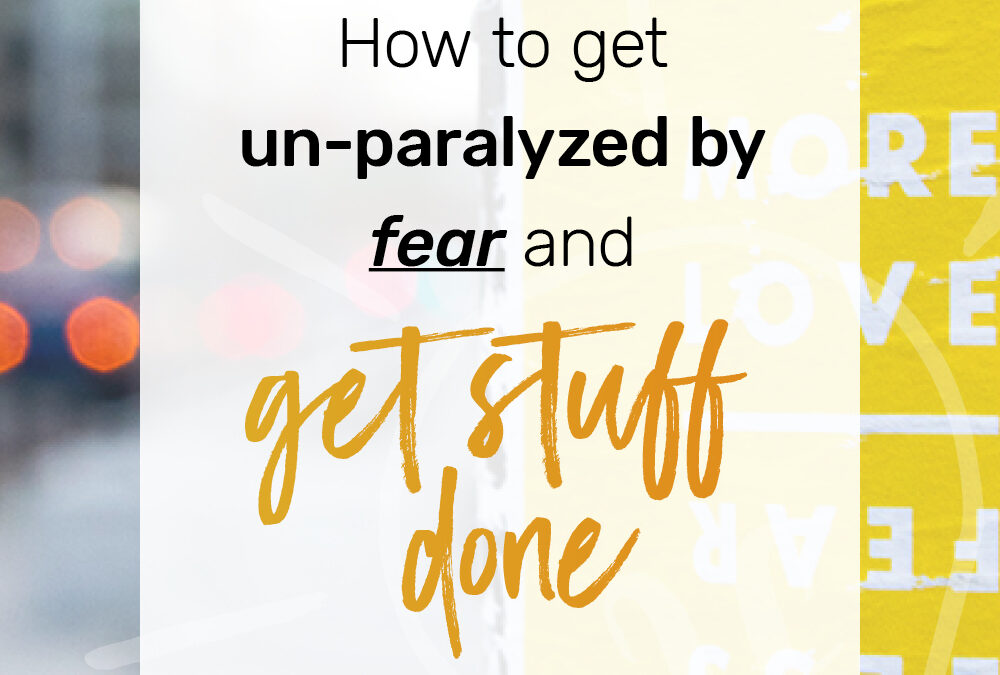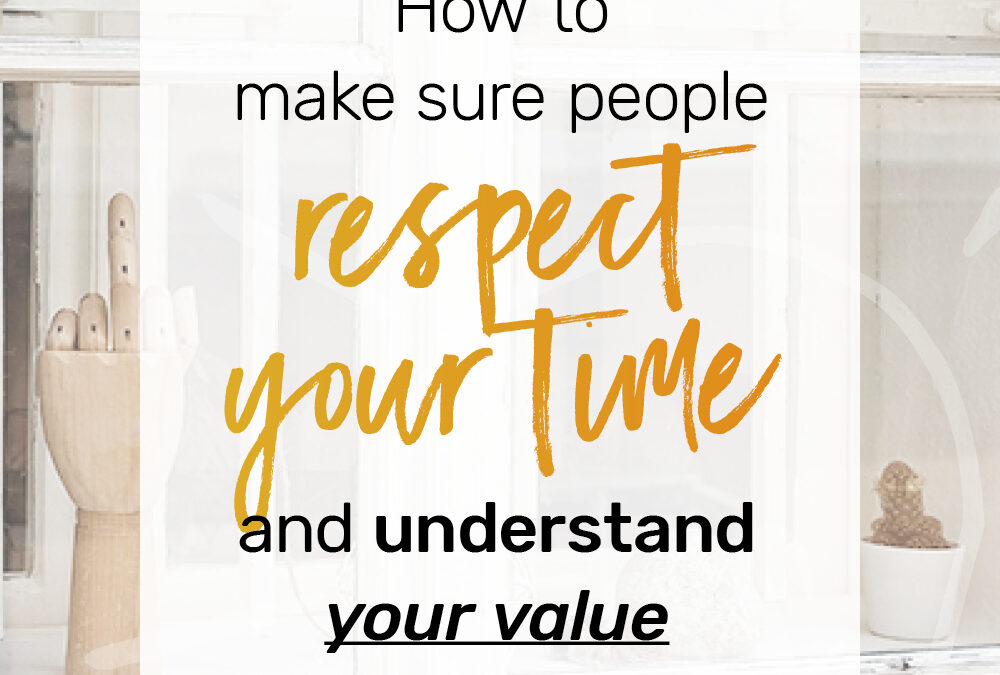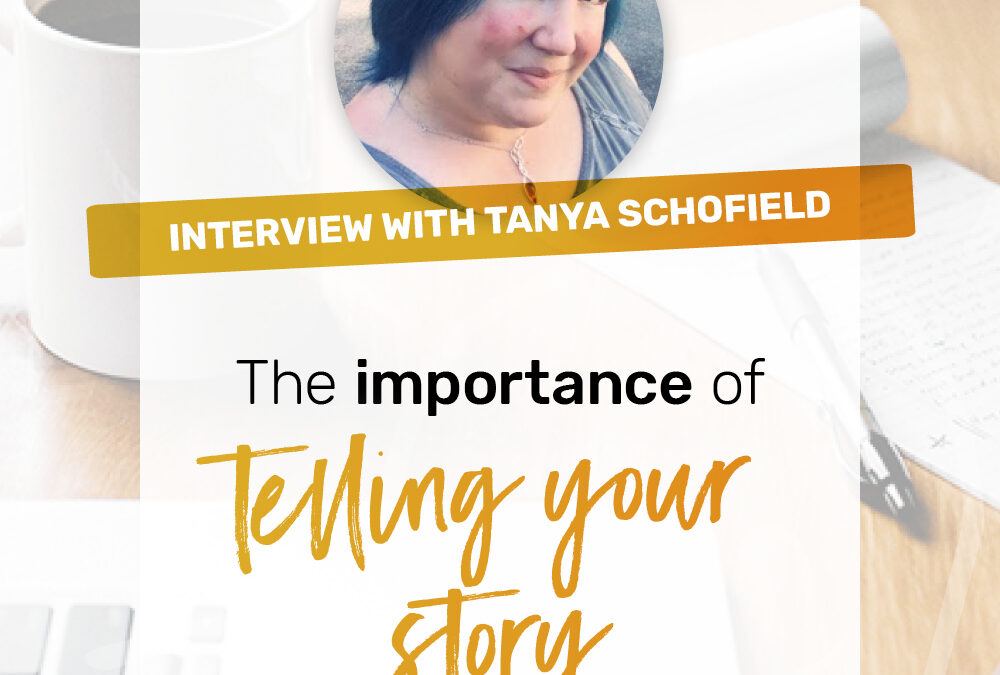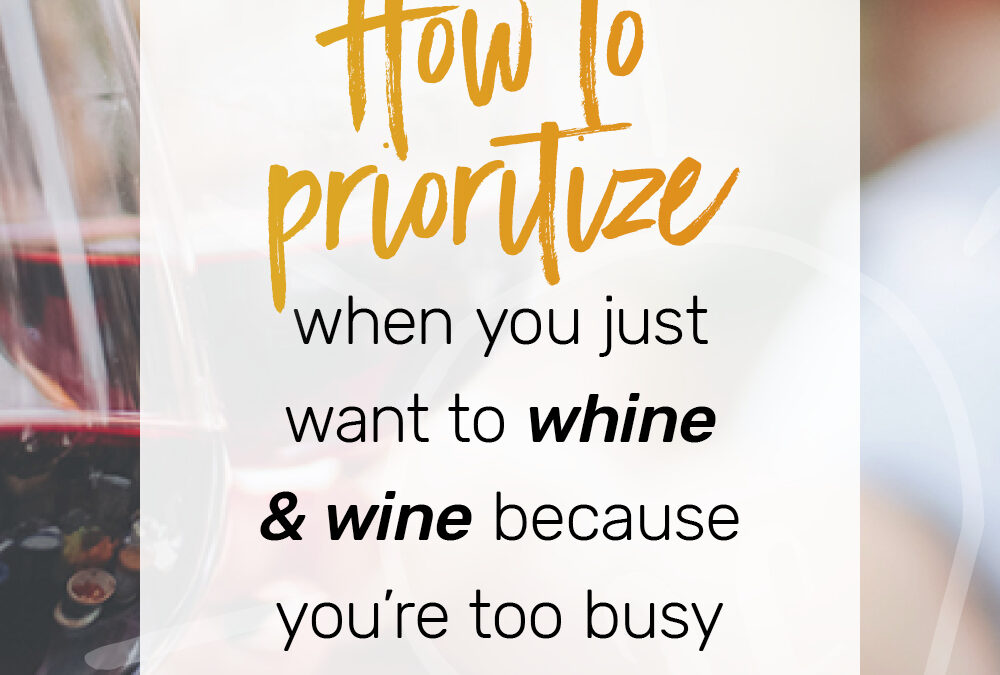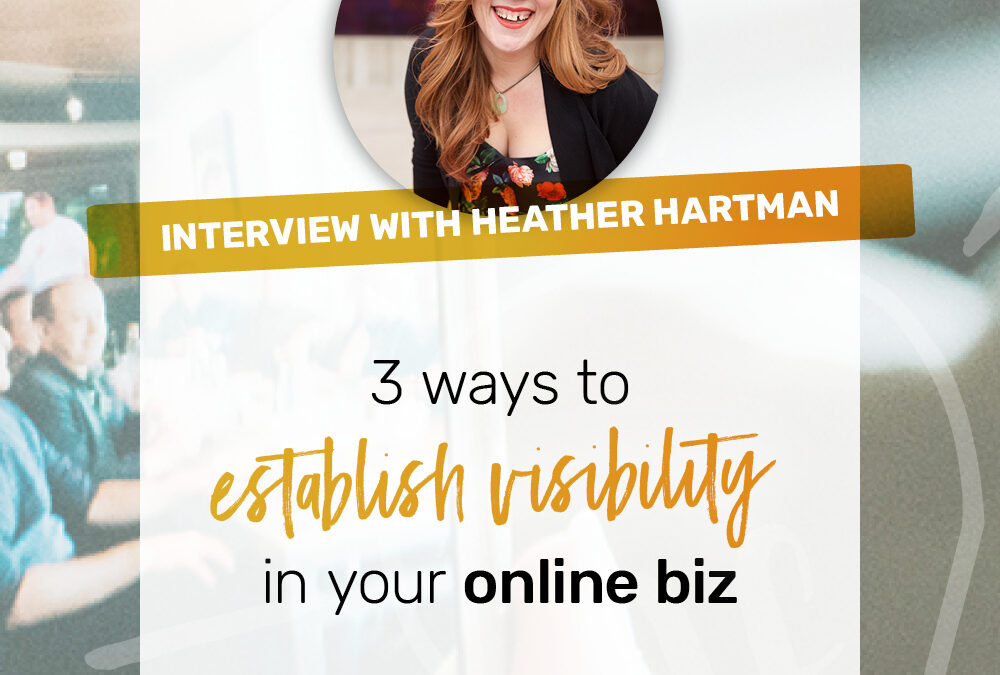LoganBrooke Logan:
Hello everyone. We are live here for #SpotlightSunday with Heather Hartman Johnson. Is It, I noticed your coaching business is just Hartman, is it? I’ve been putting Heather Hartman Johnson on everything. So whatever you want us to call you. So, Heather is a Visibility and Confidence expert. Right. Okay. Awesome. Yeah, so I just butchered your intro so I’m going to let you, I’m going to let you just step in and take over and tell us a little bit about yourself and your business first and then we’ll dive in.
Heather Hartman:
Yeah, definitely. Thank you so much Brooke. I like legit am super excited to be here. Thank you for having me on. And you didn’t even butcher my intro. It’s all good. I didn’t think that so totally don’t even worry about it. I’m used to it. No I’m kidding. So basically, um, what I do is I work with newer female entrepreneurs who are service based who kind of are a little bit afraid to be seen. I help them monetize their visibility and figure out what they’re like big message is and how to get it out into the world confidently so that they can actually get clients and get paid. Because we started online business because, not just to have like it be a hobby, right. We have our businesses because we want them to be businesses. So I like to basically help the women that I work with do that. And it’s, I’m really passionate about it because when I first started it was, I was like floundering.
Heather Hartman:
I was doing the whole hobby thing and I was like, why am I not making money. This really sucks. And it was because I had a deep fear of being seen. And so, um, basically, you know, I mean that’s pretty much what I do. Um, do, I don’t know if you want like fun facts or anything?
Brooke Logan:
Whatever you want to share. I think that’s so awesome though. Like I think that’s so just your whole thing is so needed right now cause that’s like the number one thing I hear over and over and over again is just being terrified of putting yourself out there. So I love it.
Heather Hartman:
Yeah, I know. I was going to say my favorite, favorite thing to do is like Facebook lives and really encourage people to get on Facebook live and actually do Facebook lives. Cause it’s like the best way to get seen in the online space right now. So, and I don’t see that changing in the near future either, especially with algorithms and stuff like that. So
Brooke Logan:
Live is definitely the way to go. So yeah. Fun Facts. Let’s hear some fun facts.
Heather Hartman:
Yeah. Oh my gosh. Okay. I actually, this is funny cause I just was thinking about this the other day and I was posting in a group and um, like I guess I’ll share three of my favorite fun facts. I was born raised in Anchorage, Alaska. I was a diesel mechanic when I was 21 working on like Van Hool buses for a tour company in Alaska. And then I also, I worked as a stripper in a strip club.
Brooke Logan:
There you go! Those are definitely fun facts!
Heather Hartman:
Random as fuuuck.
Brooke Logan:
So that’s like a, the diesel mechanic too is like a huge jump. The stripper. I mean I get that with the visibility and confidence. Hey, that makes you like a pro at it. Right?
Heather Hartman:
Exactly. Actually, after two months I was like you guys got take me off the schedule. I ain’t cut out for this shit.
Brooke Logan:
That’s awesome. Well those are definitely fun facts. I love it.
Heather Hartman:
Well, they’re not really related to business, but fun nonetheless.
Brooke Logan:
Definitely fun. Cool. So before we jump in to like learn more about your, your thing, um, I always like to ask everybody that comes on, like what is your definition of branding and how does it affect your business?
Heather Hartman:
I freaking love this question. I love it because actually I’m not a branding expert, but I feel really passionate that what branding is essentially is we, it’s us, it’s me, it’s my essence, it’s my personality, it’s how I show up and how I make people feel. And to me that is the definition of what I believe branding is. And you know, it goes along with my energy, with my attitude, with the way that, you know, again, the way that I show I’m showing up and the way I make people feel. And why it’s important in business is because branding is what sets us apart from other people. And we all know there’s a lot of people in this, in the online space doing a lot of the same things. You know, there’s a lot of visibility coaches, there’s a lot of branding experts, there’s a lot of fricken health coaches, there’s a lot of, you know what I mean? It’s like there was a ton of different people in the space. However, branding is what makes us unique. It’s how we set ourselves apart from the other people in the industry. And you know, I think it’s also how we attract our people to us. You know?
Brooke Logan:
Exactly. Exactly. I love it. That’s such a good answer. I love it. Well, that’s awesome. So we can talk about branding a little bit more later on. I want to like focus this part of the call on, you know, what you want to teach us. We want to learn about how to, how to be visible and confident while we’re doing it. And then at the end, if anyone has questions about anything that you say or anything branding related, we’ll stay on and answer whatever anyone has got.
Heather Hartman:
But you’re sure. Yeah. I wonder if, does anybody have questions so far? I can’t see the comments, so I don’t know.
Brooke Logan:
Not yet. But if anybody does have questions, put them in as we go.
Heather Hartman:
Perfect. Awesome. Okay, cool. So I really just wanted to talk about like three main points. Um, the most important things that I have personally found in my own business at doing visibility coaching and just being in the online coaching and consulting space in general. So the first thing I wanted to really just kind of dig into going live, right? Doing live video. And I know that you do a lot of live video and I frigging love your live videos. You’re amazing. I do, I love doing live video and I love watching them too. And so a couple of things under the live video, like, like some subtopics, right? A lot of people like to watch live video. Some people don’t like to watch live video. And the, the reason why you want to go live is because for those people who like to consume content in a video format such as this, that is why you go live. So you can be seen. So that you can share your, you know, your message and share yourself with your people. Right? Like I feel like, don’t you think that’s important?
Brooke Logan:
I do think that’s really important and I think it helps, at least for me and my business going live as opposed to just like pre-recorded video even helps so much. Just be more yourself and be more real. I’ve, I’ve found like if I prerecord a video, I’ll do it like 75,000 freakin times and if I go live, I’m just like welp, I just said that. That happened. So move on. And I feel like I get, I get a better reaction from my audience too when I go live. So I, I love it. I think it’s super important.
Heather Hartman:
Yeah, for sure. And one of the things I love about, uh, the aspect of live is that you have that like sense of, it’s like a built in sense of authenticity and rawness, right? Like if you, you know, I mean things happen, right? Dogs bark and babies cry and people open doors and you know, you’re alive and it’s, it’s like almost like, Hey, I’m human too. Like I have these things happen too. And so I think that’s a really good way to be relatable to people so that people can see, oh yeah, yeah. And I also have the same experience. Like I pre-recorded videos. I literally am like, I have taken up so much of my iCloud space. You know? And then I’m like, delete all of these damn things. So it’s almost, you know, the, the sense of being live with your audience. It’s a sense of being present also. And they really get a flavor for like, what, okay, what do you actually bring to the table? What is your, like your real flavor of authenticity and your actual YOU, the bits of you that you can’t see when you read a post, you can’t really hear inflection when you, you know what I’m saying?
Brooke Logan:
Yeah.
Heather Hartman:
So that was the one thing, the number one thing that I really love to talk about and share about and teach about. Um, and you know, I think that in a big way doing live video also helps us get out of our comfort zone to be seen. And to show up. So that’s a really big thing. And you know, I think that, um, there are lot of people who are still really hesitant to do live video. I help people get past that initial fear of like, well I can’t, I don’t want to go live. You know, there’s a lot of people who do love it, but there are still many who are fearful or terrified of being on camera.
Brooke Logan:
So how, like what do you, what are your top tips that you would tell those people that are just starting out?
Heather Hartman:
Totally. I love it. Actually the first one is like, really, um, I like to have dance parties. This is what I used to do before I went live when I was still like, oh my God, I literally would like put on some crazy rave music or like [???], or I put like Taylor Swift on and I just like shake my booty and get super energized. And then, uh, as soon as the song was over I’d be like, I have to go live, ok I’m here, I’m doin this! So, you know, the thing is if you don’t dance, do jumping jacks. Do pushups. Do something like move your body. Because what is really important to remember is that we have a lot of nervous energy that sorts of built, it starts to build up in our bodies and as we move our body and change our physiology, it makes it so much easier to like, it’s almost like, like it’s a cheaper way of drinking alcohol. Um, so that’s my like first number one tip is always, like seriously, just jam out before you go live. And then some of my other tips are more like, look into the camera lens. Not at your reflection in the computer or on your phone cause it’s really obvious and it can be a little distracting for people. But also when you, um, you know, when you’re looking into the camera lens, I think that it gives people a much better sense of your presence with them and you’re really more able to like actually hold space and be present and just be there with the people who are watching your viewers, you know. Um, and sometimes, you know, like I know there are people who are like, I just don’t know. I have like, I can’t, I can’t, I always look at myself, but you can like, you can put like a piece of paper over your monitor or you could put like a hot pink sticky note right by the, you know, right by the camera lens so that you’re like focused on that one point.
Brooke Logan:
Wow, that’s such a good, those are awesome. Like I would have never thought of doing either one of those things. But that’s so true. That’s so important. It’s both of those things are.
Heather Hartman:
Totally. And it can be really easy. And then, like I said, to get distracted by your own reflection, especially if you’re nervous and you don’t and you’re afraid you’re going to mess up. You don’t know what you know, you’re like, I don’t know how to stay on track.
Brooke Logan:
Or I’ll see people sometimes on live video just like constantly messing with their hair. Just talk.
Heather Hartman:
Yeah, totally. I hear you. Um, and then I guess, you know, a couple of the other ones… I’ve been talking about this so much lately because I’ve, like I said, I’ve been seeing a lot of people who are like, I want to go live or I’m going to do my first live. Do you have tips? And you know, some of the other things really just come down to have a topic. Um, I like to do one topic, like a main topic and then I like that just really shorthand three subtopics that are under that main topic and like have a handwritten note just by me. So I don’t like lose track. It’s really simple and you know, we don’t have to be scripted. Like I, I think a lot of people think they need to be scripted in order to be good on video, but it’s not true. Like, you know, and the, the last thing I’ll say about doing live that that is so important is just be you. Like show up as you. You can be quirky, silly, stupid. I mean, you know what I mean? I have there, there’s no wrong way to show up if you’re showing up authentically as yourself, period. Like I, I’ve watched literally I’ve watched people like burp online video and laugh and about it and not even care. And it’s like, yeah.
Brooke Logan:
So Tamera says, I forget to smile. How do you remember to smile? More like smoking, smile-talking. I have the opposite problem. Like while, I was watching a replay of one of the past #SpotlightSundays and I’m just sitting here smiling like a giant dork while Tanya was talking. I was like, what am I doing? But yeah, so smiling. Do you have tips about that?
Heather Hartman:
Totally. Well, and you know, I think sometimes, this is one of the things that I actually have heard recently is like when you’re doing video, it’s almost like you kind of have to flirt with the camera a little bit. You kind of come like flirt with the audience just a little bit and it’s almost as if you’re flirting with yourself basically. You know what I’m saying? And it’s kind of like, I think that’s a good way to loosen up and get a little comfortable with just being on camera and doing live video, you know, just like loosen up. Feel a little saucy. Get a little spicy. You know. And in that way I think it’s really when you have, an even something else you can do too is sticky notes on your laptop or wherever, like on your desk or whatever to remind you, you know, smile, breathe, be excited. You know, like easy stuff like that. Cause I like, I’m a big person who like needs reminders all the time. I need to remind myself like everything so.
Brooke Logan:
Cool. I love that. I love sticky notes. I’m going to have to try that. I’m going to have to put one that says don’t smile like a giant dork if it’s not appropriate to smile.
Heather Hartman:
Yeah exactly. Or the other thing is don’t eye fuck the camera either. Don’t be like… [Heather stares creepily into the camera]…
Brooke Logan:
Yeah, that’s really awkward. I’ve seen some of those. I know exactly what you’re talking about when you say that. That’s awesome. That’s awesome. Well, cool. So yeah, live that’s super important. Obviously. I love it. I love all of your tips. Um, but yeah, so you said you had some other stuff too though, right? Like besides the lives?
Heather Hartman:
Yeah! The other thing I was going to talk about just a little bit is branding shoots. Okay. So when I’m saying branding shoots, I mean an actual legit branding photo shoot that what you can, and I’ll share a little bit about my experience with it. And I think that this is something that you can get, um, at any stage in your business. Um, personally I waited until I was like, you know, a year and a half or so in because I still wasn’t really comfortable or confident with what am I doing and how do I really want to show up and how do I want to, how do I want to portray my business and my personality. So, um, what in the branding shoot, what I wanted was I wanted my photographs to like really exude my personality, like my silliness and my crazy faces, like my weird ridiculous posture and stuff like that like I did and legitimately it was the most fun I’ve ever had doing a photo shoot ever. I had brought my, um, it was like a little Bose bluetooth speaker and it like bumps super loud and I carry around in my purse during the whole shoot. I made an entire playlist, like a bomb ass photo shoot playlist, and it was like all super fun songs, like really upbeat, really exciting and happy and like I really just want it to like embody that, that energy of fun and you know, boldness and excitement and I really like adventure and freedom. Those are like my values, my core values. And it was amazing. And the thing that really I think made it so really awesome was that I had to actually do some homework beforehand. You know, the person who was taking my photos was like, he gave me an entire branding profile to fill out. It was like a seven page frickin packet I had to do. And I like, it really made me think about, oh, how do I want for my brand to look and feel to people, you know? And how can I infuse more of my authenticity into the brands so that people who are attracted to my energy and who like my, um, being, will find me? You know?
Brooke Logan:
Yeah. Oh, and they’re awesome, too. All of your pictures are amazing, so it worked, whatever you did!
Heather Hartman:
Thank you! Yeah, it was a lot of fun. And you know, I think that, um, for me it was a worthwhile investment and I think that they’re probably photographers who don’t necessarily, who, there’s a range of different, you know, prices to invest in for a photographers that do that kind of thing. But it’s a really cool thing to do if you want to, and for me it really helped me find myself and how I wanted it to be in my business and how I wanted to apply them. So like getting, and the other thing, what I really wanted to share about is that like I think, I think I, I think I spent like 36 or $3,700 on my branding shoot. It was a worthwhile investment. It’s a lot of money for people. So I know not everyone can afford to do that and that’s totally fine. But what I do think is that, you could even have a girlfriend come over and take, you know, shots with your iPhone or whatever. Cause some of the newer iPhones have uh-friggin-mazing cameras. And you don’t have to have like a huge budget to do, you know, a big ass branding shoot. But you can still infuse your personality and your attitude and like, you know, bits of you even just with like in one of your besties coming over with the camera phone.
Brooke Logan:
Yeah, definitely. I think that’s awesome that you say that. Cause like the first photo shoot that I did it, she’s, she’s not a brand photographer and it wasn’t that they were, like they’re not, they’re awesome. Like I love them. But I think it’s like if you have a girlfriend come over or somebody that doesn’t do that all the time, that’s where you have to come in and you have to know exactly what you want and give them direction. So like I remember during the photo shoot we like, we got to the very end and she was like, okay, is there anything else you want? I was like, can I just stand by this wall and make a bunch of goofy faces and like pretend like I’m pointing at things? And those are like my favorite ones are the ones I use for everything. Like the banner in my group.
Heather Hartman:
Seriously, that’s epic, I love it.
Brooke Logan:
It’s awesome. So just like you don’t have to hire that amazing brand photographer that first time, but you do have to, you know, come prepared and know what you want. And be able to articulate what you want. So I love that. That’s awesome.
Heather Hartman:
And one other like super easy tip, too, is if you want to do like something like that where you just have a friend come over or uh, a really reasonably priced photographer and look up like photo shoot poses. Like you can even look up branding shoot poses on like Pinterest and make a board so that you have ideas for like what you want if you aren’t really sure and you’re just not 100% like you know, you don’t know how you want them to look or whatever. You’d get a lot of really cool ideas and like whatever you jive with, that’s your authentic personality. So like do it. You know, bang it out.
Brooke Logan:
I did that exact thing. I have a whole board, a brand photography board. Because it’s so awkward to just, you know, it’s awkward to pose anyway, but that’s where that brand photographer is handy because they know what’s going to look good and what’s not. But that’s awesome. That’s such a good tip. I love it.
Heather Hartman:
And then the last thing that I was wanting to share really quick about this is, this is the most important thing I think actually. Showing up consistently. Right like, and I wanted to kind of like share my learning around what does it mean to show up consistently cause I think a lot of people have, maybe an. There’s a lot of misconception about what is it like, what is showing up consistently? What does that mean? Do I have to be the fucking same every time I show up? Do I have to be the same? Do I have to like have the same attitude and the same personality like all the time when I show up, right? Do I have to be the same on live video every time I go live or whatever? And I just want to say that no you don’t. You don’t have to be the same. You just have to show up consistently. And what, for me, what consistently means is, be you consistently. Like today I went live in my group, fucked up hair, I just woke up from a two hour nap and I was like, I really wanted to put on a really big show for you guys so I could like announce the winner of this awesome, you know, drawing our whatever, of the challenge and I was like, yeah, I’m not, I’m not feeling it. So I’m just gonna go live and what they didn’t know is I wasn’t even wearing pants!
Brooke Logan:
Hey, that’s the cool thing about working from home, right? I got my yoga pants today.
Heather Hartman:
Work those yoga pants! I love it. I love it. So I think that’s a really important thing to, for people to remember is that showing up consistently just means be you. If you’re having a shitty day, show up and fucking have a shitty day. If you don’t have to fake it, you don’t get to pretend like everything’s peaches and roses. You know? It’s like, and for, I think this is one of the things, because for me, I’m a really happy, bubbly, upbeat, energetic person. And I, I feel like people might see me and think I’m always like this, but I’m not like, that’s why there are days when I’m just fuckin’ bitchy.
Brooke Logan:
And that’s okay! That’s allowed!
Heather Hartman:
Yeah exactly! And it’s like, I think that what we all have to remember is that it’s okay to be whatever we are in whatever moment. And there’s nothing wrong with sharing it online, right? Like, in your business. Especially if you’re like, I just, I dunno, that’s my whole thing. The whole like riff on authenticity. Just show up as you and don’t worry about what people think. You’re going to create polarity. If you’re showing up authentically, there are going to be people who don’t like it. There will be people who are triggered. There will be people who don’t want to see, you know, who aren’t comfortable with authenticity or rawness or any kind of emotionality at all. You know what I mean? So I think the biggest thing to remember is just fuckin’ show up as you, every time.
Brooke Logan:
Yup. And the, the people who are meant to be there, will be there and they’ll love it. They’ll love you even more for it.
Heather Hartman:
Mmmhmm, absolutely.
Brooke Logan:
So that’s awesome. I love it. Such good freakin’ tips. So I’m, I’m so glad you came on here because that’s like something that I hear all the time and it’s just not my thing. You know, like I struggle with it, too. So, you know, some of the stuff that I’ve heard is like, you know, get equipment that makes you, you know, like if you need a little light or sit in front of a window that has good lighting and focus on that, but your like your tips are so much better.
Heather Hartman:
Oh, thank you! Totally. The dance party is epic, I swear the dance party will change, it’s a game changer. A game changer. Right. Serious.
Brooke Logan:
That’s awesome. I love it. I love it. So for anybody that came in late, it looks like we had a few people come in late. Definitely watch the replay because this video is like full of stuff. So I’m going to read through some of the comments real quick and make sure we didn’t miss any important questions. Um, Tamera’s doing a photo shoot in August. So that’s exciting! She said, can you edit my constipated face? Pants are optional. Going to rewatch the replay. Yes. Rewatch the replay for sure. Yep. Awesome. So yeah. So I’m so excited that you came in here and shared all of these awesome tips with us and, yeah. Watch the replay. If anybody has any questions, now is the time for Heather or myself.
Heather Hartman:
Yeah, totally. No holds barred. Any question is a good question.
Brooke Logan:
Yeah, for sure. So branding, like my group is about branding. If anybody doesn’t know that yet, if you just came over here to see Heather, that’s okay. You can leave if you want, when we’re done, if you don’t want to stay, I’m totally cool with that. But just, um, I think branding and visibility are so closely tied together. It’s so important to talk about both of those things together. And you, you touched on that a little bit earlier, but just owning it, really being yourself and owning it is so important. And that’s like the number one thing really, in my book.
Heather Hartman:
Yeah, definitely.
Brooke Logan:
Tamera says, thank you so much Heather. So Heather, if you check out the events tab over, like in the sidebar, there’s a, Heather’s information is all pinned in there, her website, and she has an awesome freebie. Do you want to talk about your, your freebie real quick?
Heather Hartman:
Oh, sure, sure. Um, well the freebie really is basically 10, you know, simple ways to really build your confidence. And I think they’re, um, you know, it’s like as an example, one of them is wear clothes that make you feel good, you know? And like I think that in a really big way we have a tendency to like try to mold ourselves into like what societal norms are, you know, make us feel like we need to be like, and I think it’s really important that those types of things that we remember that right? Like do things that make us feel good, where clothes that make us feel good and do a freaking negativity detox. If you’ve got negative people in your life, limit your exposure to those people. You know what I’m saying? So, I know those are like two of the 10, but like, in order to build your confidence, there are some really simple things that you can do that really don’t cost any money. And it’s just an awareness that something to think about, you know? So anyway, yeah, there’s like a ton of good stuff in there too. And like it was all kinds of Heather spicy attitude.
Brooke Logan:
Which we love! We love the Heather spicy attitude! That’s awesome. So yeah, watch the replay. If you have any questions, you know, while you’re watching the replay, feel free to tag either one of us or both of us or whatever you want.
Heather Hartman:
And do you have a little something that you wanted to kind of share a little bit about like branding and like when is a good time to like do that? Cause I think I thought some of the folks, at least I know some of the ladies in my group would probably appreciate kind of hearing a little bit from your perspective as an expert on it.
Brooke Logan:
Yeah, definitely. Sorry, we totally talked about that and I just totally forgot. Um, so there’s kind of like two different sides of branding, which, you know, part of my mission of what I’m trying to do with my business is kind of bridge the gap and, and really communicate what branding really means. Because a lot of times people think it’s just that logo and website and pretty stuff. We know that’s not true. But yeah. Um, so if, if we’re talking about like stuff like that, the, the pretty design and all of that, that should be like the very last thing that you invest in. Like, last step. But building your brand and you know, talking about like identifying your ideal client and I know that’s like beaten over everyone’s head all over the Internet all the time, but it’s like it’s super important, it’s really important. And that should be like the first thing that you do before anything else. Like identify who it is that you want to work with first of all, like that part of your ideal client. Not, not, don’t learn about them until you decide who they are. Cause you get to decide who you want to work with and what you want to do. So that should be like when you’re thinking about, hmm I want to start a business, that should be that the very first thing that you do and it doesn’t cost a penny. Like yeah, you can do that stuff yourself. And obviously you can hire a branding person who can help you with that. But just like understanding what you really want to do and then identifying those things that should be like step one. Then once, once you get like, I felt like you should do it in phases, almost like do that, that inner work and identifying all that stuff. And then once you’re ready to like, okay, I need to like get in front of people. You do need to have some kind of brand presence, you know, online. Um, even if it’s something as simple as just like a lead page or a landing page or just something to represent yourself.
Heather Hartman:
That’s what I did! That’s what I did for the first year and a half of my business, legit. I used fucking landing pages, I love it.
Brooke Logan:
And that’s awesome. It works. Like it’s totally fine. So I think there’s like a misconception that like you have to have this big, huge fancy, awesome website and all of this stuff and you don’t, but you do have to have something and you don’t want it to be shitty either. Like, if you’re only gonna do one thing, you want to do it right, but it doesn’t have to be expensive and it doesn’t have to be elaborate and this huge time suck or anything like that. But you do want to have some kind of presence for sure. And then once you’re ready, like once you have some income coming in and you’re ready to invest in all that stuff. And even like something that’s most, most branding experts don’t really talk about that. I love to talk about, this is my, for people in my group, my archetypes, my sagey side comes out. Like my analytical mind, I love like systems and automations and processes and stuff like that. So having all of that automation set up on the backend, it like for me and my business, that’s a part of my brand too. Like when, when my clients interact with me, there’s like a certain level of experience that I give them. Like all of my automated stuff is very me. And everything is branded. Even if it’s just a simple like, hey, I got your form. It’s like it’s me. And I think that’s something that a lot of people skip in the branding process for sure. So that’s something that you can do as early as you can. Like anytime you’re setting up any kind of system or anything like that, incorporate as much of you and your personality into it every step of the way.
Heather Hartman:
I really like that too because you know, there’s a lot of systems that you can just do the canned stuff or the default, whatever the default thank you page or whatever. And it’s like, it’s, it’s so much, uh, the energy’s just different when it’s branded, when it is your personality, when it’s your language. So I really love that. And also, I did want to say too, for any of the ladies who are watching from, um, who came from my group or anybody new or whatever, that, um, you have an awesome archetype quiz too, right?
Brooke Logan:
Yes, I do.
Heather Hartman:
Yeah. So check out Brooks archetype quiz. I actually need to take it. I’ve taken one before from another branding expert, but I would love to take yours. I need to actually.
Brooke Logan:
Yeah, they’re so fun. And I love taking other people’s quizzes too. Like I think it’s so interesting to see how like all the different experts kind of like pull, pull different parts of the archetypes out. And it’s fun. Yeah. So it’s definitely fun.
Heather Hartman:
I’m going to do it for sure. So actually, if you are willing, maybe you could drop that link into the, into the explosive exposure group if you’re willing.
Brooke Logan:
Sure, absolutely. Yeah, that’s the name of Heather’s group. If you want to join Heather’s group. Explosive, explosure, explosive explosion. I can’t talk exposure, you know what I mean? Oh and Tamera just put a link to my archetype quiz in the comments here, too. So I’ll also drop it in your group. Um, Tamera also is asking, is branding important with network marketers too? I have a lot of network marketers and some have it ingrained that they are their product. I think, I don’t personally work with network marketers. I don’t know about you, but I think it is important. I think a lot of the branding, you know, especially in something like that where everybody is selling the exact same product, that’s really the only thing that you have that set yourself apart. And whether you’re consciously doing it or not, you’re, you’re building a brand for yourself, whether it’s conscious or not. So all of the, like the automation, the follow up sequences and just how you interact with your, with your clients, that’s building a brand. So you might as well might as well do it intentionally.
Heather Hartman:
Yeah, for sure, I hear you. I actually don’t work that much with network marketers either. However, I am in network marketing, so, and I see how that building that brand and having that basically that personality and that energetic connection to, you know, what I do and why I’m passionate about it can really be set apart from the other Mary Kay lady or whatever. I don’t do Mary Kay. I do a different one. But that makes perfect sense. Yeah.
Brooke Logan:
So yeah. So we’ll wait just another minute and make sure there’s no more questions. But again, like anybody watching the replay, put in questions that you have, and thank you so, so much for coming in Heather! This has been so much.
Heather Hartman:
Thanks for having me, Brooke! I super love your face and I just want to tell you, I love your background, too, like get shit done. It’s like, that’s epic. So amazing. I was like, admiring it one of your other live videos.
Brooke Logan:
Yeah, I love it. I talked about it in one of the other ones too, because somebody else said that. My mommy made it for me.
Heather Hartman:
Aw, that’s so sweet! Very cool. Awesome. Well thank you, Brooke, again. I appreciate it!
Brooke Logan:
All right, well I will see everybody again. Um, definitely Thursday, maybe sooner. Sometimes I just jump in here so you never know exactly, but I will see you then. Bye Heather!
Heather Hartman:
Bye!!

